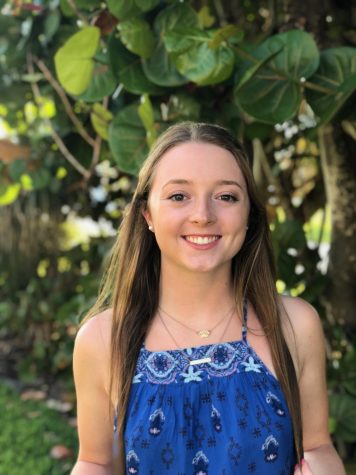Pulitzer Prize-winning journalist discusses his coverage of Trump
Washington Post reporter David Fahrenthold explains how he used Twitter as a tool for investigative reporting
October 10, 2017
In a world littered with a “tornado” of information, David Fahrenthold used Twitter to find what all journalists strive for: the truth.
Last year, journalist David Fahrenthold investigated the Donald J. Trump Foundation and discovered that Trump donated less than $10,000 over seven years and used another $10,000 of his foundation’s money to buy a portrait of himself.
Fahrenthold, a reporter for The Washington Post and the 2017 Pulitzer Prize winner for National Reporting, spoke to an audience on Tuesday in Washington and Lee’s Stackhouse Theater.
Fahrenthold said his journey with Donald Trump began about two years ago. In February 2016, the reporter attended a rally in Iowa where Trump stopped the event to give a local veterans group a check for $100,000.
Fahrenthold decided to research where that money actually went. He said he thought it would take a few days to find the information, and then he would be onto another story.
But when Fahrenthold called Corey Lewandowski, Trump’s campaign manager at the time, Lewandowski said, “Just trust me that the money has been given away.”
Fahrenthold paused at this point in recounting the story, and all of the journalism students in the audience chuckled. A journalist cannot just end his search there, as Trump’s manager assumed Fahrenthold would.
Fahrenthold took to Twitter to find answers.
He created a list of 450 different charities that he thought were most likely to have received money from the Trump Foundation. He called the organizations day by day and tweeted his progress daily.
Fahrenthold’s process was transparent, public and most importantly, directed at Trump via his Twitter handle, @realDonaldTrump
Fahrenthold was not sure if this method would work. He says he thought, “Maybe this is a waste of time? I tried the thing the kids like and thought it was horrible and never would do it again.”
But Trump did notice. He actually gave the money away that same night after Fahrenthold tweeted at him.
Fahrenthold began to investigate all of Trump’s philanthropic giving to trace where the money actually went.
He received tips and leads from his Twitter followers, some of which led him to find a portrait of Trump that the Donald J. Trump Foundation had purchased, using charitable funds, for $10,000.
One of Fahrenthold’s followers noticed the portrait in a Travelocity picture of a bar at one of Trump’s golf courses. Fahrenthold said having the portrait there was technically illegal because the portrait was located in Trump’s for-profit business but was purchased with his non-profit funds.
“In fourteen hours, we went from just a picture on the wall, to breaking the law,” Fahrenthold said.
Although some might see Twitter as confusing and littered with nonsense, Fahrenthold said he is able to find truth in the jumble by acting as a journalistic filter between what goes in and out of crowdsourcing.
Fahrenthold said the most important lesson he learned from his year of covering Trump was to involve the audience in what he was doing and let people into the process.
He said his main goal as a journalist has been, and continues to be, reaching an audience with clear and honest news. He wants to grab people who find themselves lost in the abundance of news and let them be a part of the excitement of investigating a story.
When a journalism student asked him what comes next, Fahrenthold said, “I don’t think there will ever be a candidate like Trump, but I hope we learn some lessons out of that which help us cover whoever comes next.”



